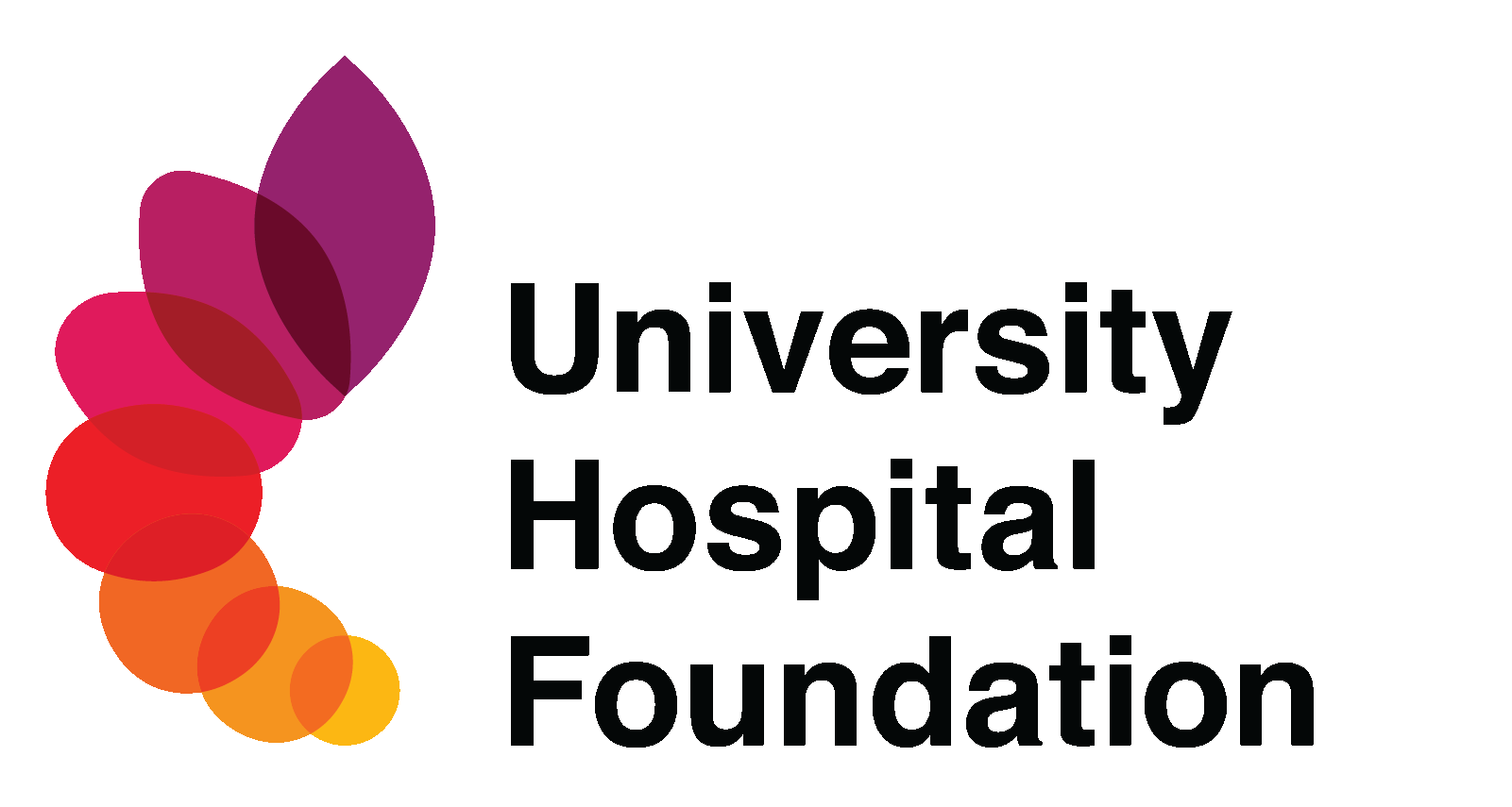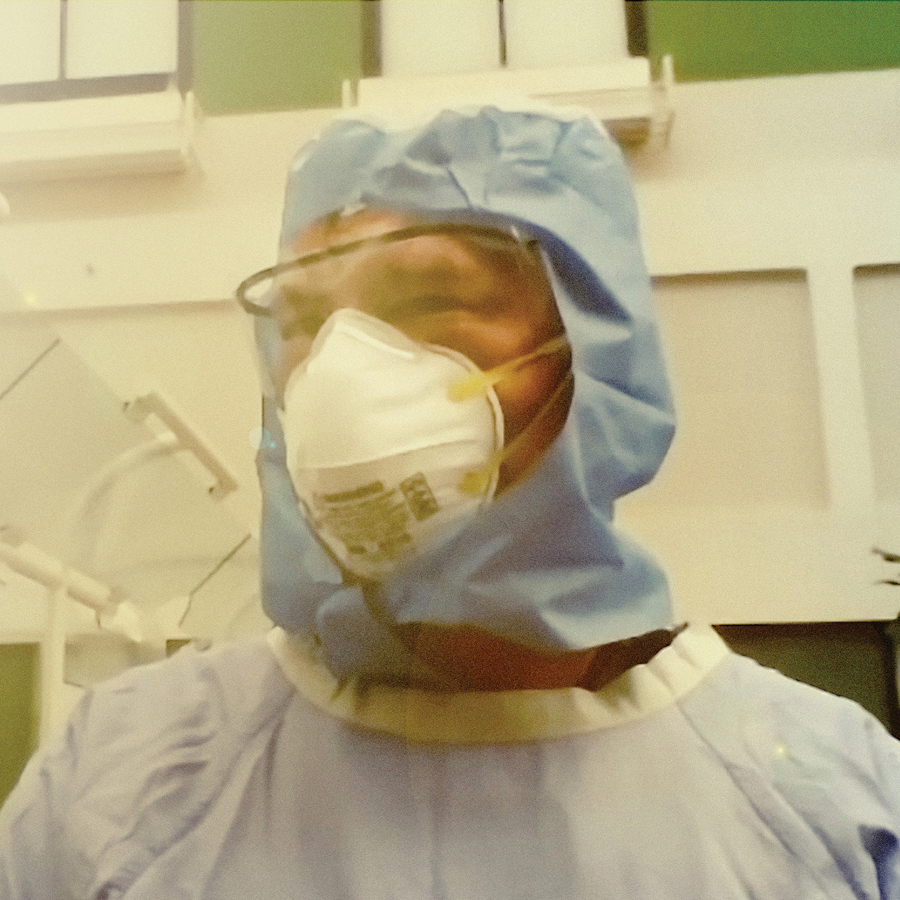Medicine Behind the Mask
Intensive-care pros were ready for the pandemic.
Dr. Peter Brindley, Intensive Care Unit, U of A Hospital
WHEN A HOCKEY TEAM PREPARES for a best-of-seven Stanley Cup showdown, the players practice, practice and practice some more. They try to recreate game scenarios during their practice sessions. They look at video of the opposing teams and try to pick out their strengths and weaknesses. Each player applies everything he’s ever learned about hockey to winning the big prize.
In a lot of ways, the Intensive Care Units at the University of Alberta Hospital function a lot like that. Like pro athletes, the health-care professionals practice, practice, practice. They talk about worst case scenarios and how to deal with them. They learn how to manipulate delicate medical instruments while wearing bulky, protective suits. Basically, they learn how to pick up car keys while wearing mittens.
As the virus spread through Asia and then through Europe in the winter of 2020, critical care physician Dr. Peter Brindley and his General Systems Intensive Care Unit and Neuro Sciences Intensive Care Unit teams were prepping for when, not if, the virus would come to Edmonton.
“We’re always preparing for something or practicing for something, even if it’s something we’ve seen a thousand times before,” says Brindley.
Medicine is a hands-on business that requires the coordination of a well-oiled powerplay unit. So, Brindley and the ICU staff had to practice how to perform all of their tasks while wearing protective gear that he likens to spacesuits.
“We did a lot of simulation exercises, wearing the full gear,” he says. “The isolation gear keeps us safe, but equally makes communication difficult. Routine things like putting a tube into someone’s throat to help them breathe can actually be very difficult when you have this ear on, because it’s tough to coordinate the team. The procedures we do in the ICU require a level of manual dexterity and mental quickness, so you can coordinate the team and say ‘hey I need this.’ That’s very difficult with the extra equipment we’re wearing. So, we had to practice that. We had to back up and say ‘let’s go back to basics, here. We have to re-learn how to this.’”
And, as they practiced to receive a wave of patients, they also made sure to get themselves as well-rested as possible. They were told to prep their families, so they could get the support they needed at home after an exhausting shift in the ICU. They looked at best practices from professionals around the world who deal with crisis situations. They weren’t just practicing how to place tubes with PPE on, they were mentally getting ready for the stress that comes with a pandemic.
As Brindley and his teams were preparing for the arrival of COVID, donors to the University Hospital Foundation were doing the same, preparing for a pandemic they had never experienced before in the way they knew best – by digging deep and making donations in support of anyone who may need it.
The University Hospital Foundation’s Emergency Response Fund has raised critical funds to support response efforts, including a safe biorepository to preserve samples taken from people who test positive for COVID-19 that will support dozens of world-class researchers.
Funding from Festival of Trees contributed to Text4Hope, a mental health initiative that has helped nearly 50,000 Albertans struggling
with the over-whelming impact of the pandemic on their lives, and in partnership with Alberta Health Services and five other major health foundations.
But that’s not all. Brindley and the staff expressed their appreciation for the many donations of food, coffee and treats received from individuals and businesses.
“The good stuff,” says Brindley. “Totally unexpected. Right from the heart.”
He said the staff also received donations of plastic protectors, which keep the masks’ band from chafing the skin behind the ears. Without them, he said the skin behind the ears becomes red and raw after a 12-16 hour shift. Tablet devices were donated, allowing patients who were isolated to have virtual visits with family and friends.
“The ingenuity of Albertans came to the fore, and that was filtered through the University Hospital Foundation,” he says.
Brindley believes that masked medicine is here to stay. As COVID-19 hasn’t gone away, images of doctors and nurses covered in plastic, their faces obscured by shields, will become a new normal. But he also understands that the necessary suits are intimidating for patients. And, so, every effort has to be made to make sure the humanity of the caregivers shines through the sterile environment.
“We even talked about if we should have big pictures of ourselves out of our gear, so the patient can see that there’s a human being who cares deeply about them.”
Share this article
Facebook
Twitter
LinkedIn

